Remember I said that ‘heritage’ was a trend to watch? Well, alongside last week’s Esterbrook JR, here’s another example of that trend in action: the Perfecta, by a reborn Tibaldi.
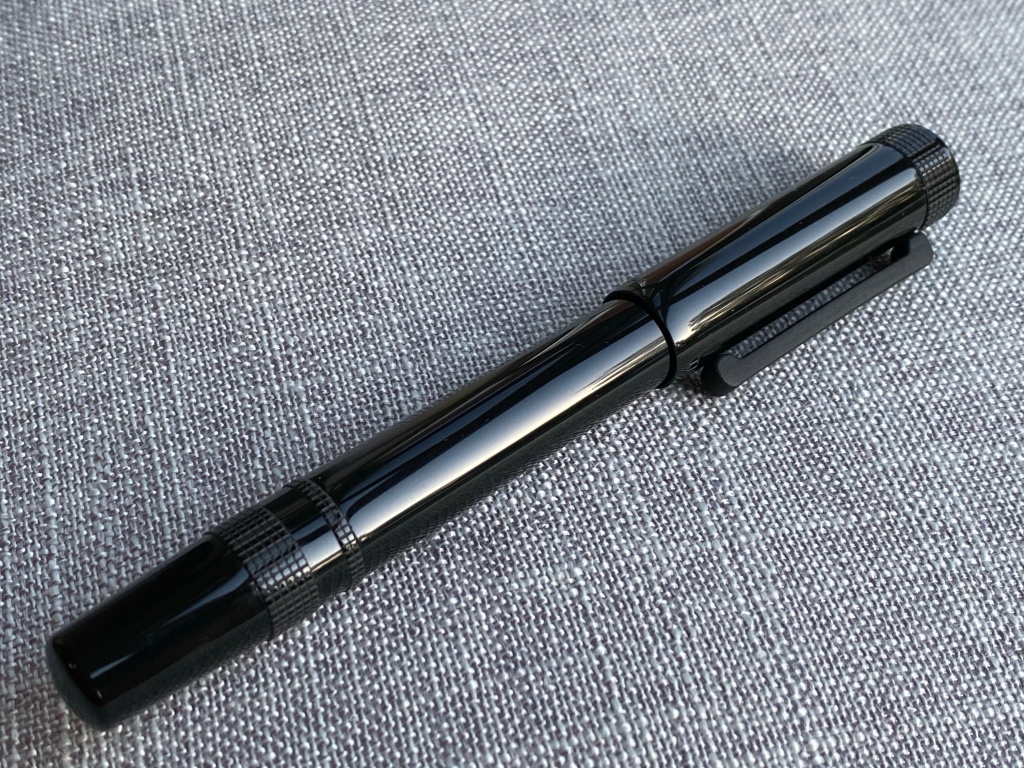
Tibaldi, like many Italian brands, has bounced around ownership and rebooted its portfolio numerous times over the decades. But the important thing is that the current incarnation of Tibaldi is Italian owned, the pen is proudly emblazoned ‘Made in Italy’, so I’m counting this as an authentic reboot, not simply milking of a truly historic brand.
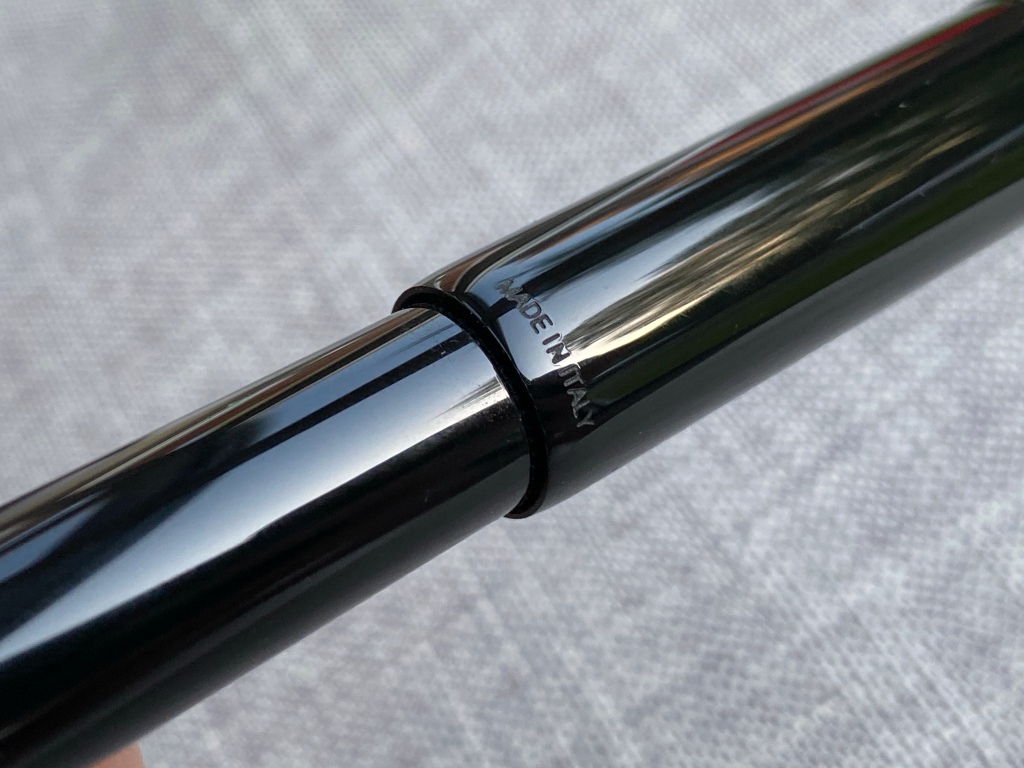
The Tibaldis of the past made all kinds of pens, including super high-end jewelled special editions for Pele and tie-ins with luxury car manufacturer Bentley. But today’s Tibaldi is taking a fresh approach — and doing so carefully, for a very different market segment.
It has just three current models, all named after historic Tibaldi models from the golden age. All three have steel nibs, and run under 200 euros, and the Perfecta I’m reviewing here is the most expensive at 195.
The overall look of the entire portfolio is retro chic: clean lines, some bold patterns and colours but overall, quite restrained. It’s clear that Tibaldi is pitching at urban professionals who appreciate classic elegance.

I picked the Perfecta from the three models because its styling is so distinctive. It’s styled after the original Perfecta, which was a black safety pen from a hundred years ago.
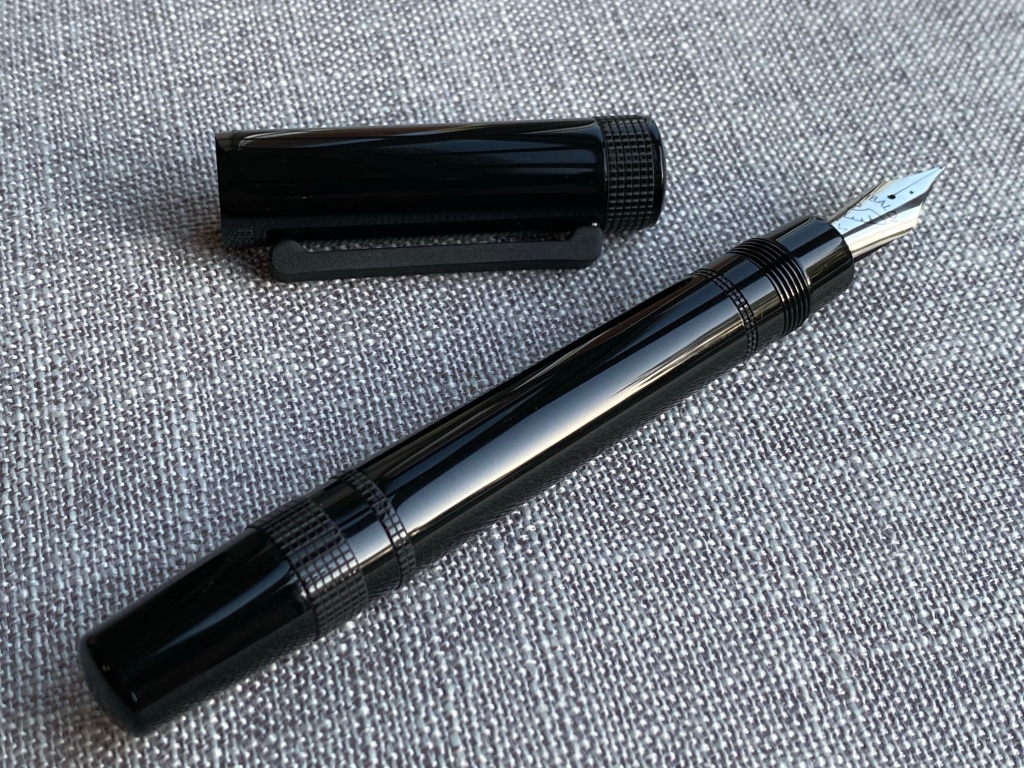
As a result, the closest modern comparison looks-wise is probably the Montblanc 1912. The Perfecta has a chunky cap and barrel, and broad bands of knurling, with nearly flat ends and a subtle taper down its length.

Under the hood, though, it’s not a safety pen. It has a conventional steel nib, plastic body, C/C filling mechanism, screw cap, etc — but it still has some distinctive features that are worth taking a second look at.
First, appearance. Although the original Perfecta, from what I understand, had a removable brass clip rather like the Kaweco Sport does today, this rebooted Perfecta has a curious rubberised integrated clip.

It’s not sticky or tacky, but adds some tactility, and because it’s also very springy, it works well. Other than the clip and the safety-pen styling, Tibaldi has gone minimal with the appearance. The whole pen is black plastic, no visible metal trim of any kind, featureless finials, and the only engraving is around the cap, which reads TIBALDI and MADE IN ITALY. This is not a pen for people who want to shout.
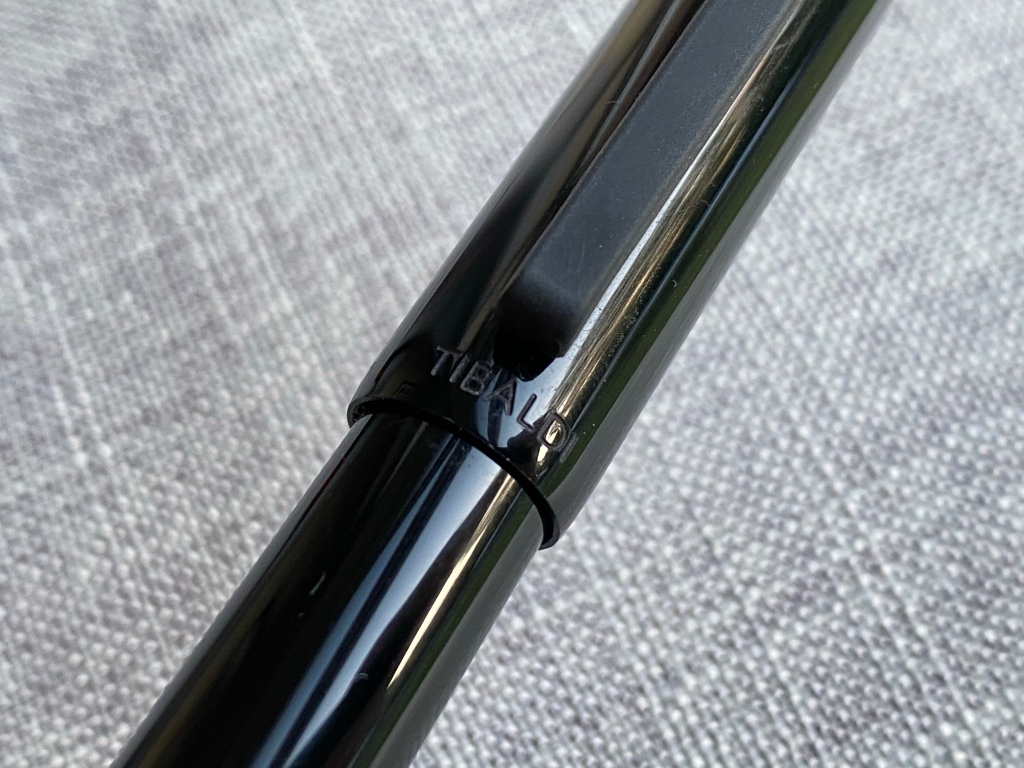
To complete the look, I would have loved the Tibaldi name and model to be engraved down the barrel, as the original Perfecta did and much as Montegrappa does these days with the Monte Grappa, and Parker does with the Duofold or Onoto with the Magna. It’s a clear heritage indicator.
Second, comfort. Like the Montblanc 1912, the cap threads are almost down by the nib — but not quite. There’s still a tiny little section to unscrew to get at the mechanism inside (watch out for inky fingers when screwing the nib back on after filling).

This means that most users will be gripping the pen on top of the threads.
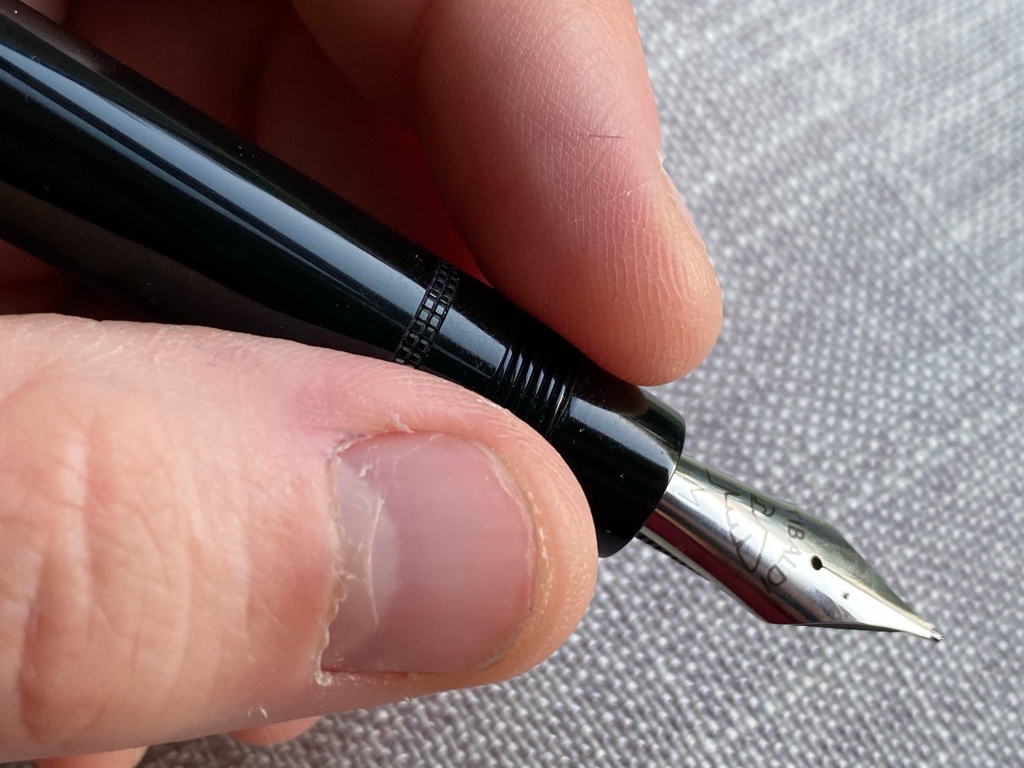
Luckily, they are smooth and comfortable. And because there’s no stepdown from barrel to grip, the pen feels chunky and fills the hand.
It posts, but becomes very long.

The Perfecta is a lot lighter than I was expecting: there’s no brass mechanism inside, after all. The only comfort downside I experienced was caused by those bands of knurling around the faux piston knob. They sit right on the webbing between my thumb and forefinger and irritate when I’m writing for more than a few minutes. Your grip may vary, of course.
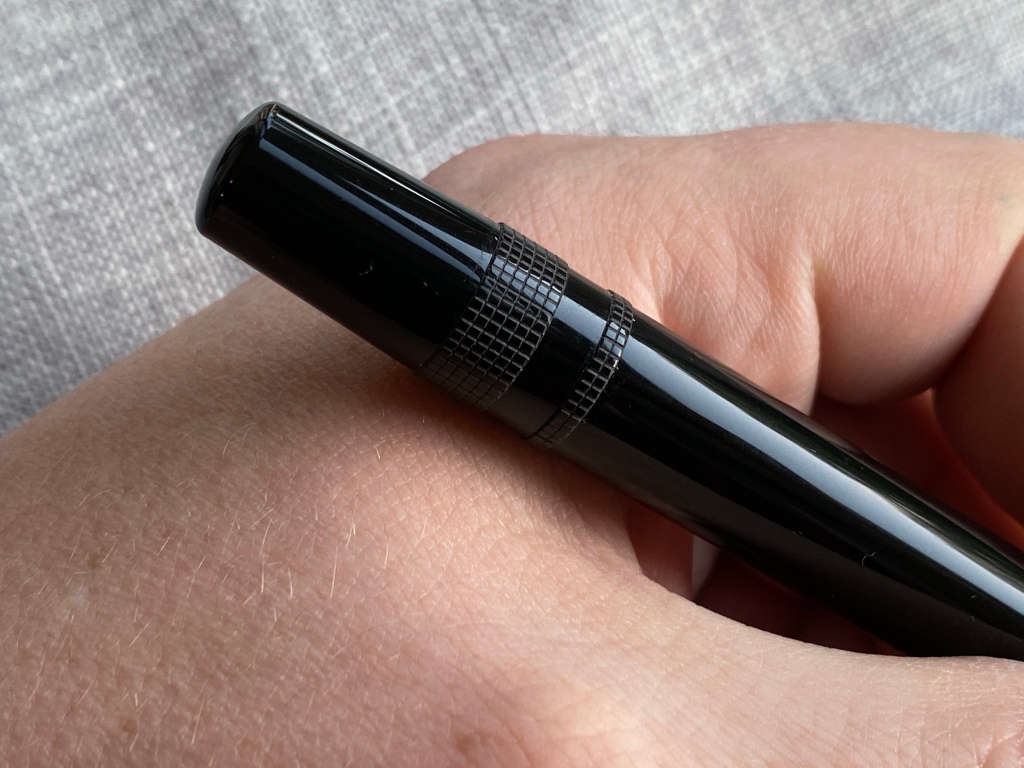
Third, the feed. Although the Perfecta has a plain-looking, rather conventional steel nib, it’s supported by an ebonite feed that’s attractive and adds a touch of retro class.

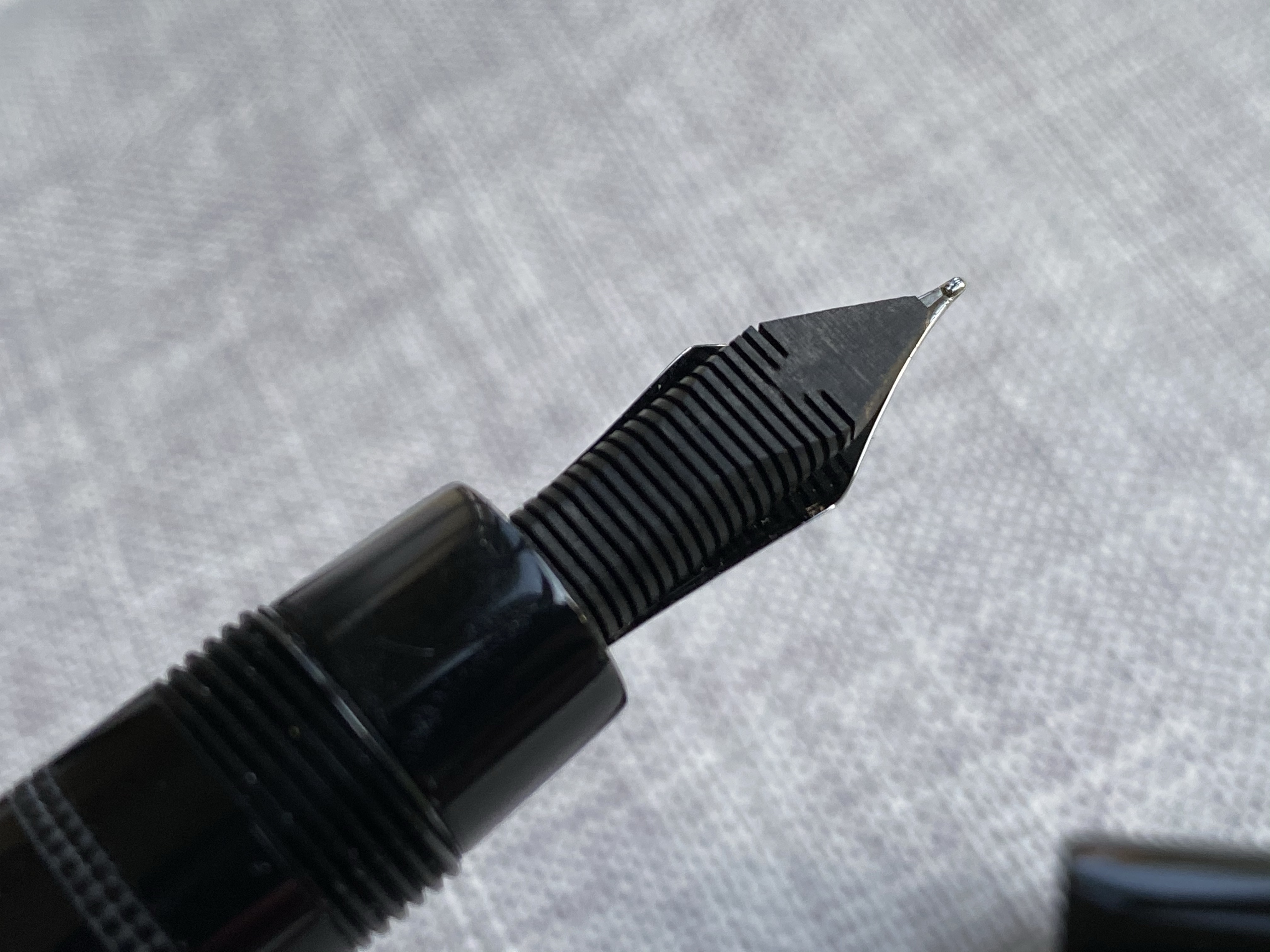
I really like the look of ebonite feeds, and the claim is that they provide better ink flow than plastic. But here it doesn’t seem to make much difference.

I wrote using both the supplied Tibaldi black cartridge, and the supplied screw-in converter filled with the lubricated Bungubox 4B, and the flow was steady, on the dry side of medium, and no different to pens with plastic feeds in my experience.
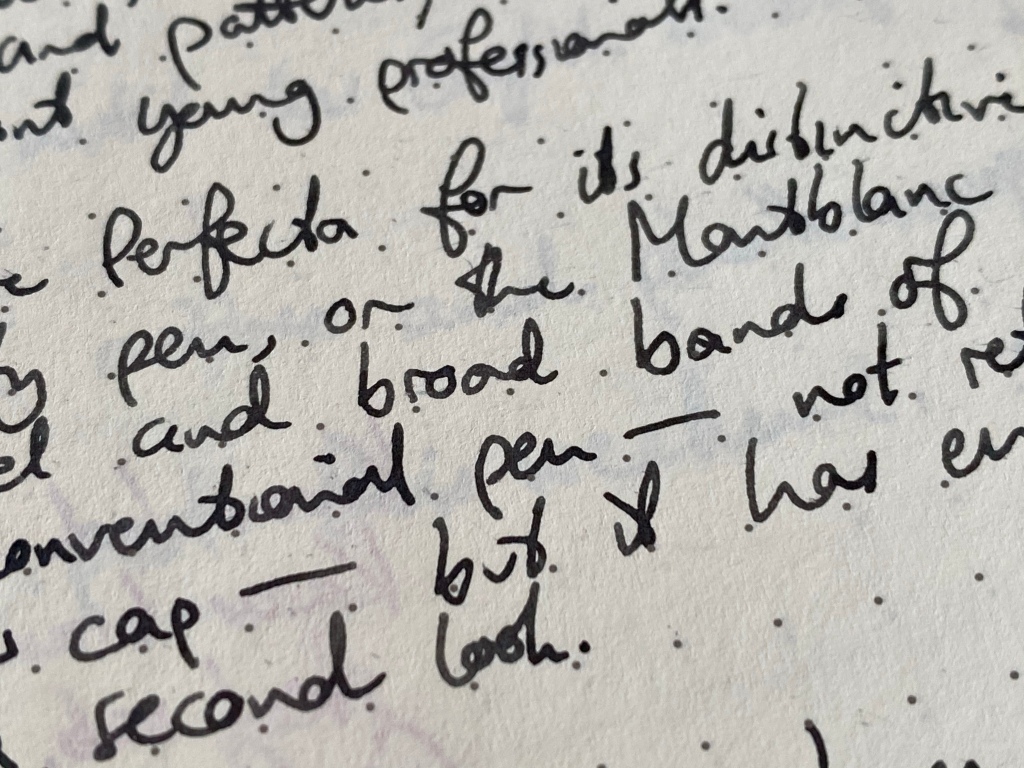
The nib is mostly smooth, the M tip running ever so slightly on the fine side for a western pen, and it is a nail — there’s only the slightest line variation if you push hard.
For me, the writing experience was a little lacking in Italian flamboyance. But all of this is true to the target market Tibaldi pictures in its advertising photos: the Perfecta will be a perfect urban work tool for young professionals, suitable for quick notes with a heavy hand, even on bad paper. This is not a Scribo.
When writing those quick work notes, you appreciate the cap that unscrews in one turn exactly. And the threads work beautifully. Alas, one of the problems with placing the threads at the end of the pen is that there’s no overlap to help you align the cap and barrel. I found it easy to put the cap on slightly crooked if I wasn’t careful, and that made the threads bind.
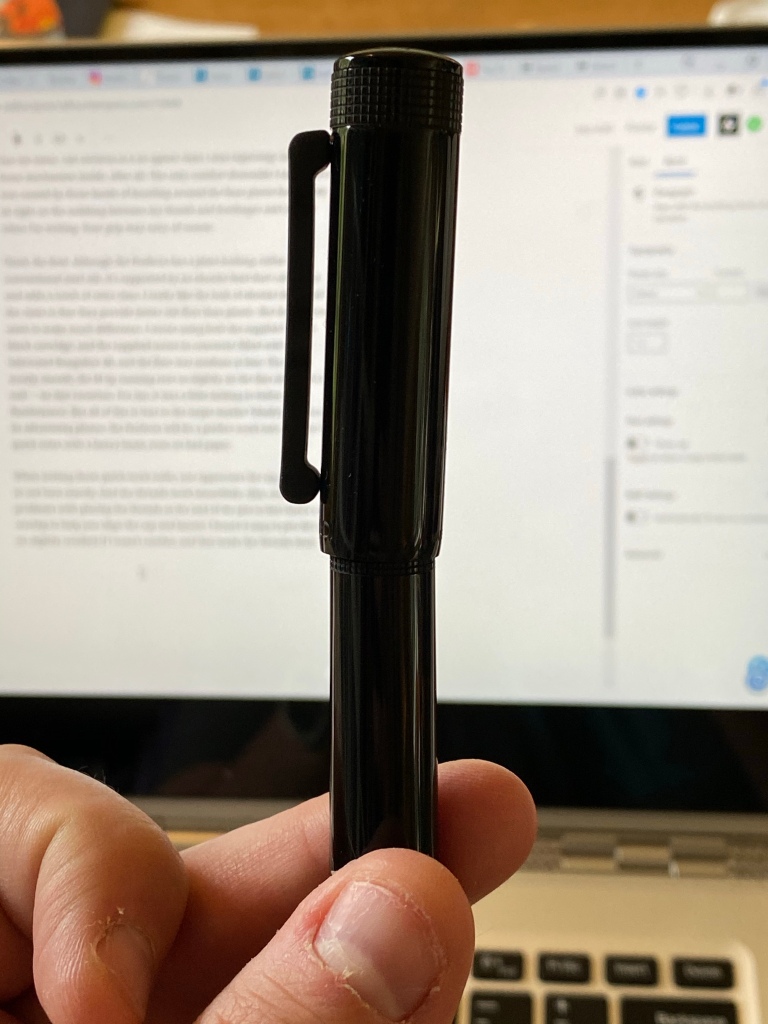
Despite some of the premium features like the ebonite feed, screw-in converter and rubberised clip, and the smart contemporary packaging and branding, this doesn’t quite feel like a 195 euro / £175 pen.

Don’t get me wrong, it feels well built, well conceived, and the specs are solid. But you can get a lot of very nice steel-nibbed, plastic C/C fillers for around the £150 mark, from Maiora, Leonardo, Esterbrook, and a host of others.
Stray into metal pens and there are plenty of wonderful pens from Otto Hutt, Namisu, Karas Pens and so on for often closer to £100, or even sub £100. And then there’s the shadow of the Lamy 2000, a real historic design with gold nib and piston filler for £150.
Given the limited name recognition that Tibaldi has, here in the UK at least, I think the Perfecta would be more keenly priced at a street price of just under £150. The street price today is around £165, which is getting there.
I personally really like the safety pen styling that Tibaldi has so carefully executed, which harks back to the original Perfectas, and I also value the distinctive little touches that make this design its own. But for the price the thing that really could have set the Tibaldi apart from the sea of competition is the writing experience. You don’t have to make another safety pen, but give me some of that vintage pen flair, Tibaldi!

This pen was provided at no charge by the lovely people at Tibaldi. You can get yours direct at Tibaldi.com, from Appelboom or Fontoplumo — there’s no current UK stockist that I know of.
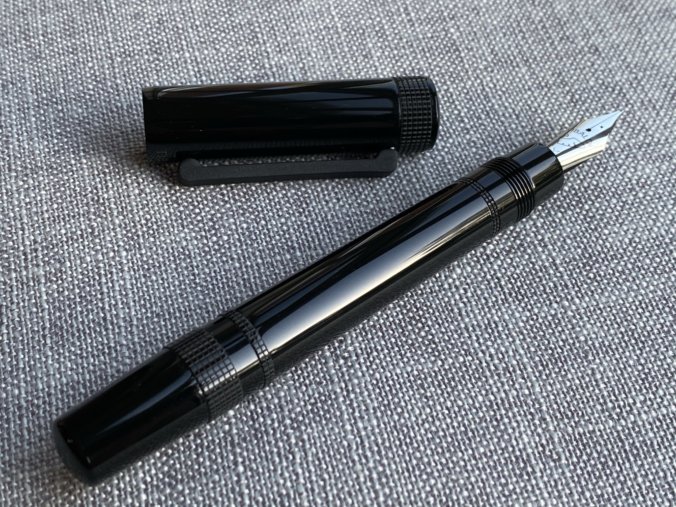
Very interesting review, thanks. As you say, it does look like a Montblanc 1912 but without a retractable nib. Perhaps a pen to try before you buy but that will difficult if no one here sells them! The ebonite feed may help to keep the nib moist and reduce hard starts.
You may be right! It has been a very reliable writer. No hard starts, skipping, or other bad behaviour.
It is quite ok, but lacks that little bit extra.
I like the all black with the integral trim elements but that clip is not attractive to me. Everything else about the Perfecta is rather clean looking. The clip comes off as something from another object. It makes think industrial door handle rather than classic fountain pen.
I feel like maybe the pen was designed/made to a given level (75% out of 100 as a random value) and that was good enough for who they want to sell to. Could Tibaldi provide the remaining 25% where the rest of us look for something more to stand out and justify the price? I suppose so if they see their current brand & business going there. The question is do they?